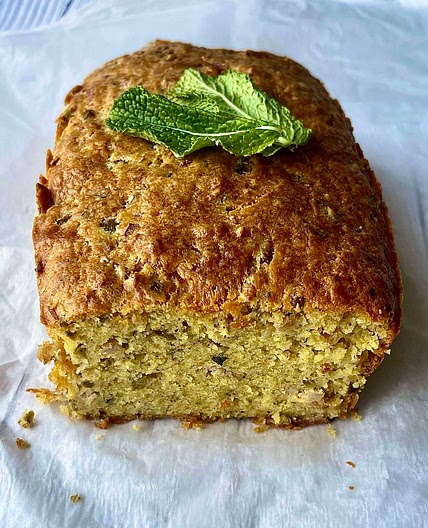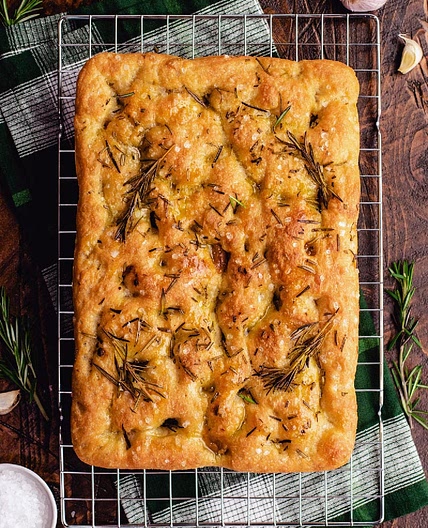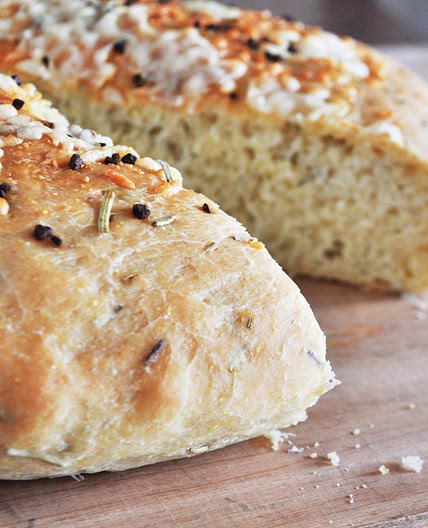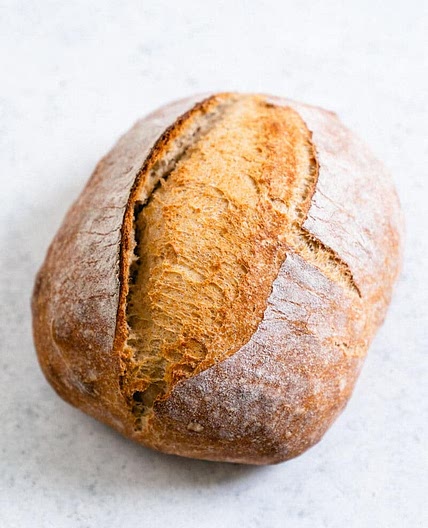By Peter Vorster
Sourdough Bread Boule
This everyday sourdough boule recipe from our partner Justin Chapple is perfect for beginners. Because the hydration level (the percent of water to flour in the recipe) is slightly lower than many sourdough bread recipes, the dough is less sticky and easier to shape. It yields a great tasting, consistent loaf with a slightly tighter crumb. As you become more experienced with sourdough bread baking, you can begin to gradually increase the hydration level to achieve a softer texture and more open crumb. One of the most important steps in the process is to start with an active, mature sourdough starter. You know a sourdough starter is mature when it has active bubbles and when it passes the float test (ie, 1 tablespoon of it floats in a small bowl of water).
Updated at: Thu, 17 Aug 2023 04:50:46 GMT
Nutrition balance score
Good
Glycemic Index
72
High
Glycemic Load
309
High
Nutrition per serving
Calories2271.1 kcal (114%)
Total Fat24.7 g (35%)
Carbs427.6 g (164%)
Sugars2.9 g (3%)
Protein71.6 g (143%)
Sodium7762.4 mg (388%)
Fiber31.7 g (113%)
% Daily Values based on a 2,000 calorie diet
Ingredients
1 servings
Instructions
Step 1
In a large bowl, using a wooden spoon or rubber spatula, mix the warm water with the sourdough starter. Stir in both flours and the salt until a shaggy dough forms. Using your hands, squeeze and mix the dough until evenly moistened and all the dry flour is incorporated.
Step 2
Scrape the dough into a clean bowl. Cover and let rest in a warm part of the kitchen for 4 hours; stretch and fold the dough over itself every 30 minutes to 1 hour.
Step 3
After the 4 hours, keep the bowl covered and let the dough rest in a warm part of the kitchen until increased by 50%, about 8 hours or overnight. At this point the dough should be supple and jiggly.
Step 4
Very lightly dust a work surface with all purpose flour. Gently scrape the dough onto the work surface; do not flour the dough. Working your way around the dough, gently stretch the side out and fold it over the center, forming a rustic ball. Using a bench scraper, flip the dough so the folds are on the bottom and let rest for 15 minutes.
Step 5
Meanwhile, line an 8 to 10-inch bowl or proofing basket with a clean kitchen towel and dust it with white rice flour.
Step 6
Using a bench scraper positioned under the side of the dough furthest from you, gently pull the dough towards you across the work surface, rotating slightly as you drag it, to form a taut ball. Repeat this process 3 more times for a total of 4. Using a bench scraper, quickly and carefully invert the dough into the prepared bowl or basket. Lightly dust the top with white rice flour, cover, and rest in the refrigerator overnight.
Step 7
The next morning, preheat the oven to 500°F for at least 30 minutes. Brush the base of the Bread Oven with olive oil. Invert the base of the Bread Oven onto the bowl or proofing basket, then quickly and carefully invert the dough onto the base.
Step 8
If needed, dust the boule with white rice flour. Using a razor blade or a very sharp, thin knife, score the boule decoratively (1/4 to 1/2-inch deep). Cover the Bread Oven with the domed lid and place in the preheated oven. Reduce the temperature to 450°F and bake for 30 minutes, until the boule is risen. Remove the lid and continue to bake the boule for 20-30 minutes more, until golden brown. Immediately transfer the boule to a rack and let cool completely before slicing.
Step 9
Note: You know a sourdough starter is mature when it has active bubbles and when 1 tablespoon of it floats in a small bowl of water.
Notes
0 liked
1 disliked
There are no notes yet. Be the first to share your experience!












